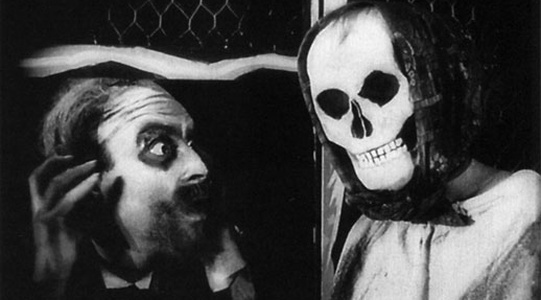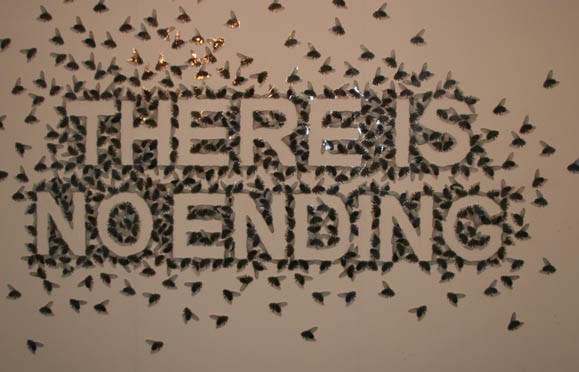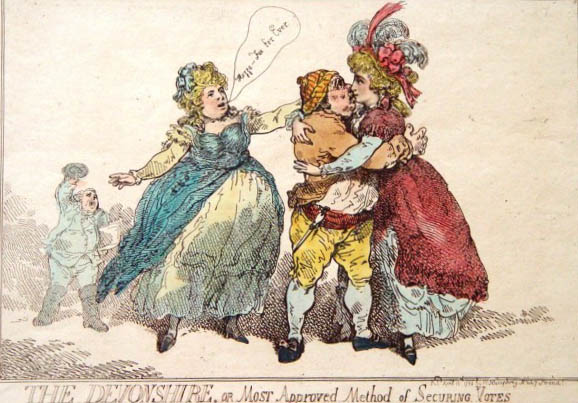Late Reflections on The Authoritarian Personality
The essay that follows is a response to a seventy-year-old book. If you need a crash course on The Authoritarian Personality, first published by Adorno and a team of University of California psychologists in 1950, you could skim the Wiki entry or, better, have a look at this essay by Robert Gordon, available on the boundary 2 website.
The essay is scheduled to appear in South Atlantic Quarterly in 2018.
The Authoritarian Personality—I want to use the following paragraphs to explain why I find this admittedly remarkable book to be unpersuasive, why, in fact, it is a matter of some urgency that we not accept its arguments. I’m not sure how to come at the point directly, so permit me to note, by way of introduction, that anyone who reads widely in the history of fascism is likely to spot, sooner or later, a series of antitheses—oppositions, I mean, that were native to fascism itself and that historians return to again and again. If we want to be able to think clearly about The Authoritarian Personality, it will be enough for us to know about two of them. First, historians have made the point that fascism proceeded through stages, that, in other words, it wasn’t a single static position, that it was a dynamic entity, rather, tending to mutate over time. What, one might ask, were those stages? Broadly, the scholarship calls attention to fascism as an idea and an imagining, as an ideological current, therefore, cultivated by intellectuals—a fascism of the book, in other words—which was then succeeded by fascism as a mass movement. We need to be able to distinguish between those two. But then we also need to be able to distinguish between fascism as a movement and fascism as a regime—which is to say, as a successful movement, one that had achieved power or taken hold of the state—a fascism that governed. The point most commonly made is that fascism in its early stages—a still ideational fascism—was in certain respects more radical than what came later, or that it was more avant gardist, more likely to strike anti-capitalist and anti-bourgeois poses. The fascists, this is to say, became more conventionally conservative over time, more recognizably a party of the Right, once they felt compelled to make their case to the non-bohemian many and once forced by their very success to make concessions to existing institutions and coalition partners. The stages thus yield an antithesis—at one pole, fascism-as-dissident-counterculture; at the other, fascism as the mainstream run amok, the establishment’s protracted revenge against its critics and rivals.
This same antithesis now becomes available in a geographical form, via the single, uncomplicated observation that Mussolini’s government, unlike Hitler’s, did not attempt to monopolize the entire sphere of thought and culture. Historians are keen to point out that there was no Italian Gleichschaltung—no effort to bring everyone into line. Within certain parameters, independent intellectuals continued to publish in Italy, which means not that there were still socialists or communists or liberals expressing themselves freely in Florence and Rome—those people really were shut down—but that there remained an outer circle of freelance fascists, the half-fascists or the merely unenrolled, the shirts not of black, but of charcoal and onyx and taupe, who continued to propose hypothetical other fascisms, in a scatterplot around the fascism that was actually being implemented. An aestheticist and nonconformist fascism thus remained more visible in Italy throughout the ‘20s and ‘30s, never wholly subsumed into fascism-as-revanchist-orthodoxy. Early vs. late; Italy vs. Germany—two antitheses that are really one, a fascism with anti-bourgeois features vs. its snarlingly bourgeois rival.
This compounded antithesis matters because there are a hundred different claims you might wish to make about fascism that will run aground upon it. Arguments about fascism routinely invert or negate themselves, and the reason for this is surprisingly easy to identify. Histories of fascism often posit an A fascism and a B fascism, and even if you think that “A vs. B” sounds too schematic, as it doubtless does, that second term will suffice to undermine one’s accustomed sense that fascism was a uniform position—or indeed that it was, to a singular degree, a politics of uniformity, a uniform movement in the pursuit of uniformity. The problem for those of us needing to theorize fascism is that a great many things we will want to say about the B fascism will not be true of the A fascism. Worse, if we mean to fashion our historical analysis into a politics, then we run the permanent risk of pegging our anti-fascism to one pole or another of the fascist antithesis, such that by opposing one fascism, we will end up endorsing the other, if only unwittingly, because we have failed to so much as recognize this latter as fascist. Our anti-fascism will be stalked by its fascist twin.
Anyone wanting to come to grips with The Authoritarian Personality, then, will need to understand first how basic these transpositions are to the study of fascism. The movement’s nearest synonym has always been “national socialism,” in a manner that predates the renaming of the German Workers’ Party in 1920. So was national socialism national? Manifestly, you say, nothing is better established than that. Theorists of fascism are fond of the term “ultranationalism”—that’s a nationalism made super- and hyper- and arch-. But then what do we say about the swastika, that most recognizable of fascist emblems, incomparably more iconic than any bundle of wooden rods?—the swastika, this hermetic counter-crucifix, which, as of 1917, was still associated above all with sites in India and Baluchistan and western Turkey. The point that overfamiliarity makes hard to grasp is that every official building in Nazi Germany was adorned with an Orientalist hex sign. German troops marched under an ankh or dream-catcher, an Aryavartic pentacle that derived its talismanic charisma not from its Germanness—not, that is, from its being indigenous to Silesia or Brandenburg, which it wasn’t—but from its near-ubiquity across four continents.
The word “Aryan,” meanwhile, is not and never was an apt equivalent for “Teutonic” or “Nordic.” Even as a white-supremacist term of art, the word has always meant something like “Indo-Germanic.” It’s that hyphen we’ll want to pay attention to, informing us as it does that doctrines of the Aryan were not premised on yet another nineteenth-century sundering of the West from the non-West, but precisely on their fusing. Of all the ways of naming white people, “Aryan” has got to be the most peculiar—though “Caucasian” is plenty strange and “white” itself mere misdescription. Aryan, however, is the only entry on that list that could be suspected of negating whiteness even while exalting it. Aryan—the Eur-asian or Occi-oriental.
National socialism, then, was not straightforwardly nationalist. But was it socialist? The historians have a ready answer for that one, which is that even though some Nazi officials were willing to deploy a modified socialist rhetoric, the Nazi regime was quick to dismantle the institutions of the independent and organized working classes; to round up Leftists; and to close ranks with IG Farben and Siemens and IBM. National socialism was a capitalism dreaming of two continents.
At this point, there is a question that any anti-fascist is going to have to ask: What claims can we make about fascism that will escape transposition of this kind? That challenge gives us a few good reasons for endorsing the approach taken by Adorno and his colleagues in The Authoritarian Personality. The f-scale, in particular, could be grasped as a solution to this problem. But it’s more than that. Anyone still needing to be convinced of the achievements of Freudianism as a mode of political analysis could do worse than read this book, which turns to psychoanalysis in order to overcome the difficulties that have always weakened other theories, and especially to fix what has been least convincing about attempts to explain fascism in intellectual or ideological terms. To turn to psychoanalysis is to insist that there is no philosophical or merely doctrinal path to fascism—that fascism has never been a matter of the substance of one’s beliefs. It is akin to a syndrome, hence a way of inhabiting whatever creed or identification a person might have cathected to. There may not be a Protestant path to fascism, which is simply to say that some Protestants turned fascist and some didn’t, but there is a fascist way of inhabiting your Protestantism. There may not even be a nationalist path to fascism, but there is a fascist way of libidinizing your nationalism. If that point seems plausible, then the next step is simply to extend it to social history, whose results are similarly inconclusive about such matters. There is no particular social path to fascism, no economic or demographic niche that opens chute-like onto the far Right—the National Socialists were a mass party and recruited successfully from across the regions and classes and professions—but there might be a fascist way of being attached to your social position, any social position.
So that’s the achievement of the f-scale, and it’s worth sticking up for. And yet the theory fails to convinces all the same. The f-scale, too, comes apart upon the fascist antitheses. Maybe the problem is already apparent: Adorno and his colleagues have proposed a series of fixed attributes that they think makes up the fascist personality. Here’s Adorno summarizing the book’s findings at a YMCA in 1948: The proto-fascist personality type involves “mechanical acceptance of conventional values, blind submission to authority combined with a violently aggressive attitude towards all those who don’t belong, anti-introspectiveness, rigid stereotypical thinking, a penchant for superstition, a vilification of human nature, and the habit to ascribe to the out-group the wishes and behavior patterns which one has to deny in oneself.” Anyone alerted to the reversals that occur in the passage from fascism to fascism prime has got to suspect that we could just as well flip each of these character traits—name its opposite—and still find ourselves sitting across from a fascist. The f-scale describes the personality of a fascist, but then so does the anti-f scale. Handed an anti-fascist checklist by the Californians, we should be able to go through and negate each of its terms and thereby find not a non-fascism (the low scorers!), but an alternate path to fascism. Shall we just do it?
1. Conventionalism: Fascists, Adorno tells us, are deeply conformist, the prim creatures of conventional morality, quick to punish anyone who offends against a stupid decency—Victorians in leather trenchcoats. This observation might be right as far as it goes, but what it omits is that the Babbit-Nazis of Adorno’s description shared the movement with fascist revolutionaries and world remakers and proclaimers of a New Europe, with those who wanted to de-Christianize Germany, to revive a pre-Frankish religion of runes and Wotan or to forge a grossdeutscher Buddhism. Here’s Robert Brasillach, writing near the end of the war, not long before he was executed for being one of the most outspoken French Nazis: “Fascism was a spirit. For us it was not a political doctrine, nor was it an economic doctrine…. It was first of all an anticonformist, antibourgeois spirit, in which disrespect played its part.”
2. Authoritarian submission: The notion that fascists are typically submissive and obedient, meanwhile, is difficult to square with the movement’s reliance on mass mobilization—its determination to agitate and unleash the public rather than pacify it. This is often taken to be the characteristic that most obviously distinguishes fascism from a generic authoritarianism. Energy and the deed counter docility and ductility. Enthusiasm counts for as much as compliance.
3. Authoritarian aggression: The troubling sentence is this one: In fascist societies, “hostility that was originally aroused by and directed toward ingroup authorities is displaced onto outgroups.” The claim that fascists are aggressive or violence-prone is as close to a consensus position as one is likely to find. And yet to say additionally that fascists are the ones who channel their aggression towards an outgroup is drastically to understate the vehemence of their attack on existing institutions (and to skip over the very minor role that anti-Semitism played in fascist Italy for most of its duration). The problem is best grasped as a conceptual one: The fascists came to power only by declaring illegitimate the up-and-sort-of-running institutions of government and by anathematizing entire sectors of German and Italian society hitherto regarded as normal. They were wholly capable of waging war on the ingroup—or of reclassifying in- as out-. To say that aggression targets the outgroup is to skip all the urgent questions about how the social field gets cleaved and re-cleaved. Here’s another French fascist, Drieu la Rochelle, writing in 1934: “We are against everyone. We fight against everyone. That is what fascism is.”
4. Superstition and stereotypy: Superstition and stereotyping have been paired by the Berkeley authors because they both point to the inability of proto-fascists to think clearly about what is happening in the world at large and why it is happening. People susceptible to fascism are alienated in some properly Left Hegelian sense of the term—unsure of how events and institutions are produced, mired in the opacity of the social, cognitively thwarted by the complexity of networked causes. But then we have names for people who have been trained, contrariwise, to think carefully about such causes. Some of them we call “historians”; others we call “scientists.” To say that fascism thrives where causal understanding collapses is to suggest that there was no proto-fascist history-writing, in the manner, for instance, of Ernst Kantorowicz’s biography of Frederick the Second, and no fascist science either. But then, of course, we now have decades of scholarship, much of it Adornian in spirit, documenting the scientific orientation of National Socialism. That fascism requires superstition as its provender can only be maintained by someone who has never heard the term “biopolitics.”
5. Anti-intraception: The Berkeley authors make it hard to so much as register the existence of a fascist science—and then they do the same thing for fascist poetry. Proto-fascists, we are told, are uncomfortable with inwardness. They would gladly put a taboo on reflection or on the display of inner life or on psychoanalysis itself. But then are we to say nothing about Stefan George and Ezra Pound and D’Annunzio and Yeats? Was there no such thing as a fascist lyric, hence a fascist inwardness? Were the fascist and near-fascist poets not fascist when they wrote poetry? Did they only become fascist again upon putting down their pens? Are lyric poems written by fascists less lyric than ones written by liberals or socialists? Less inward? Not at all inward? But then what makes them lyric? Did Yeats not write lyric?
6 & 7. Power and “Toughness” + Sex: Then of course there’s the idea that proto-fascists are tough guys with hang-ups about sex. That idea can be dismissed by pointing to a particular person. One of Stefan George’s closest associates for a time was Alfred Schuler, a freak classicist of sub-Nietzschean caliber, who wanted nothing more than to resurrect a pagan antiquity and who thought he could do this mostly by throwing toga parties. Schuler wrote almost nothing; he was more of a counter-culture guru than an intellectual; but his central idea seems to have been that European culture was all-but permanently rent by a conflict between the male principle and the female principle, to be understood, presumably, along orthodox lines as rationality vs. irrationality, logos vs desire, activity vs. passivity, &c. Schuler thought that Europe might yet be redeemed if Westerners could agree collectively to abandon settled gender roles and embrace instead a universal androgyny. The Greeks and Romans would point the way in this regard, because they had practiced boy-love; they had been wise enough to worship the she-male. Schuler thought, in other words, that pederasty, by offering a fragile synthesis of male and female or mind and body, might just keep Europe’s primal gender conflict in check. This idea had as its extension the idea that everyday life in Europe had been thrown permanently off kilter when Roman culture went into eclipse; the Roman world had promoted androgyny; the early medieval world had reestablished rigid gender roles. And the culprits behind this almost millennial crime were, of course, the Jews, since they were one of the very few eastern Mediterranean cultures to prohibit male love, which makes of any Christianity that will not spill its seed nothing but a generalized and evangelical Judaism. Christianity, in other words, had merely propagated and enforced the homophobia of the ancient Jews. When love between men thus became taboo, so this line of reasoning ran, the Jewish spirit and its gender orthodoxies went into the ascendancy, and it was this world-historical shift that a sibylline and modernist poetry might yet undo. It matters, then, that Schuler is known to historians mostly as the person who re-introduced into modern European culture the swastika, which was to be the emblem of the Future and Genderless Age. Indeed, Schuler for a time wanted to change his name to the Hakenkreuz, a symbol with no spoken equivalent. His reasoning here was roughly like Prince’s: The dingbat under which ‘90s-era Prince released his CDs combined the classic, bathroom-door sign for Mars—hard-on north-north-east—with the classic, incongruously dangling sign for Venus, which makes his just one of several recent transgender riffs on those old gender symbols. The revived swastika, in this sense, was one of the earliest instances of the typesetter’s hermaphroditic astrology.
This leaves (8) projectivity, as the one item from the f-scale we still need to consider. I would offer that its status is special for us. It will require extra attention. The claim that Adorno and colleagues make is fairly straightforward: that anyone “ready to think about and to believe in the existence of such phenomena as wild erotic excesses, plots and conspiracies, and danger from natural catastrophes” must have a rowdy Id—they have to believe such things are likely, they must themselves feel the pull of sex and destruction. Proto-fascists are the ones ready to see in the world their own most malign impulses. The theory of projection has always been of particular interest because it is psychoanalysis’s most obviously dialectical figure, this parody of Hegelian reconciliation, in which the subject rediscovers himself in some other and then, offered the chance for self-communion, declares war on this Other-Self instead, trading in the bei sich for a fatuous gegen sich. Projection matters to us because it is via its mechanisms that fascism and anti-fascism are most directly conjoined. The American anti-democrat is alarmed by how anti-democratic everything has become. The Tea Partier circa 2011 attacks Obama by drawing a Hitler mustache on his portrait. It is at this moment, upon discovering that the people we were pretty sure were proto-fascists have adopted an anti-fascist accent, that caution recommends itself. We will want to pause, to at least wonder about the possibility of projection in our own anti-fascism, and not just in theirs. Are we sure that projection isn’t involved in our willingness to believe that other people are fascists, our finding that plausible? Is there projection in the f-scale itself? Couldn’t our diagnosis that other people are given to projection itself involve projection? And if not, why not? Under what conditions can anti-fascism itself carry a fascism?
It’s at this moment that we’ll need to look up from The Authoritarian Personality and go back to The Dialectic of Enlightenment. It used to be taken as given that fascism was a movement of the counter-enlightenment; no book has done more to alter that perception than Adorno and Horkheimer’s. It can come as a surprise, then, to realize that Adorno and Horkheimer weren’t actually disagreeing with that earlier claim. New readers are going to understand The Dialectic of Enlightenment better if they can see that it takes that other, prior point as read. The word that we usually omit when summarizing the book is “also.” Adorno and Horkheimer thought they could show that fascism was also an Enlightenment project, that fascism had a disastrous way of getting the Enlightenment and Counter-Enlightenment to coincide—or that any organized enlightenment eventually reached a point where it could no longer be distinguished from counter-enlightenment. That’s the dialectic in the title—without the word also there is no dialectic. The title always has to be heard as The Dialectic of Enlightenment and Counter-Enlightenment, which they mostly call myth.
The problem, then, is that the book almost only gets read as “Enlightenment critique”—indeed, it is often held out as the twentieth century’s single greatest entry in that genre. But maybe it’s time to admit that “Enlightenment critique” is an intemperate simplification and pretty much a mistake, in which most of Adorno and Horkheimer’s argument gets shorn away. Enlightenment critique is The Dialectic of Enlightenment de-dialecticized. One forgets the starting point, which was that fascism had presented itself above all as counter-enlightenment. Not in the Dialectic of Enlightenment itself, but among its readers, and on the syllabi in which it is excerpted, the counter-enlightenment that is the closest thing that fascism had to an official ideology gets held out as the authentically anti-fascist option. In this form, the Dialectic of Enlightenment, far from being the centerpiece of anti-fascist philosophy that we need it to be, becomes the vehicle by which a certain proto-fascist sensibility has been kept alive in the extended postwar era, in which one important version of the fascist temptation survives because disguised as its opposite.
Recognizing as much should help us see at last why it is important that we not accept the framework offered by the Berkeley team in The Authoritarian Personality—because it is in the pages on the f-scale that Adorno signs his name to the non-dialectical version of his own dialectical argument. It is in this volume that dialectic gets truncated back to diagnosis. It is finally hard to agree with the West Coast Adorno if we accept that the f-scale was meant to identify proto-fascists and not just company men. The mind pauses and reflects. Does anyone really think that the fascists were right-thinking squares who always did what they were told and wanted to punch queers in the face? The German catastrophe was an awful lot weirder than that—uncomfortably weird if weird is what you like. A critical theory that preemptively declares itself a Zona Antifa gullibly deeds over its stances to the very movement it opposes. Two American thinkers share credit for coining the term alternative right: 1) the elderly intellectual historian who gave a speech in 2008 commending a movement less egalitarian than Fox News, the Republican Party, and the Heritage Foundation, welcoming a conservatism willing once again to embrace scientific racism and to stop pretending it admires Martin Luther King; and 2) the young intellectual historian who edited that speech for publication online. In the 1980s, the older man wrote a book cataloging all the philosophical prizes that Hegelian-Marxist apostates bring with them when they convert to anti-communism. Twenty years later, his fond reminiscences of taking a class with Herbert Marcuse in the early 1960s are matched by the tributes he writes to Jared Taylor’s American Renaissance. First one reads this: “There were … Frankfurt School texts that I found instructive, particularly Dialectic of Enlightenment and Negative Dialectics.” And then one reads this: “Which American party stands for the white counterinsurgency? … Significantly, the white solidarity that Jared advocates has never really developed in Western history outside of colonial settlements and in the American South.” At least one early member of the Frankfurt School spent his later career refunctioning a concept of Marx’s, the Asiatic mode of production, into a bludgeon with which to thump the Reds. Frankfurt School accounts of the administered society are joined by neo-Confederates who define the enemy as “the managerial society” or borderline fascists who can tell you all about the “therapeutic managerial state.” The day you first read Guy Debord was the day you should have realized not only that you could practice détournement, but also that it could be practiced upon you, that the cultures susceptible to jamming include your anti-fascist own. In November 2016, that younger intellectual historian addressed a room full of white nationalists. “Hail our people!” he said. “Hail victory!” He wrote his master’s thesis on Adorno.
A few notes:
•The book that argues most openly for fascism-as-process-and-sequence (idea, movement, regime) is Robert Paxton’s Anatomy of Fascism. The French fascists are quoted in Zeev Sternhell’s Birth of Fascist Ideology. Jack Jacobs quotes Adorno speaking at the YMCA in his Frankfurt School, Jewish Lives, and Anti-Semitism. The material on Schuler I owe to Robert Norton’s Secret Germany: Stefan George and His Circle.
•I talked this argument through with friends and co-thinkers at a roundtable at Hunter College in November 2016. Special thanks are due Robyn Marasco for organizing “The Authoritarian Personality, Revisited.” Thanks, too, to Eric Kurlander.
















